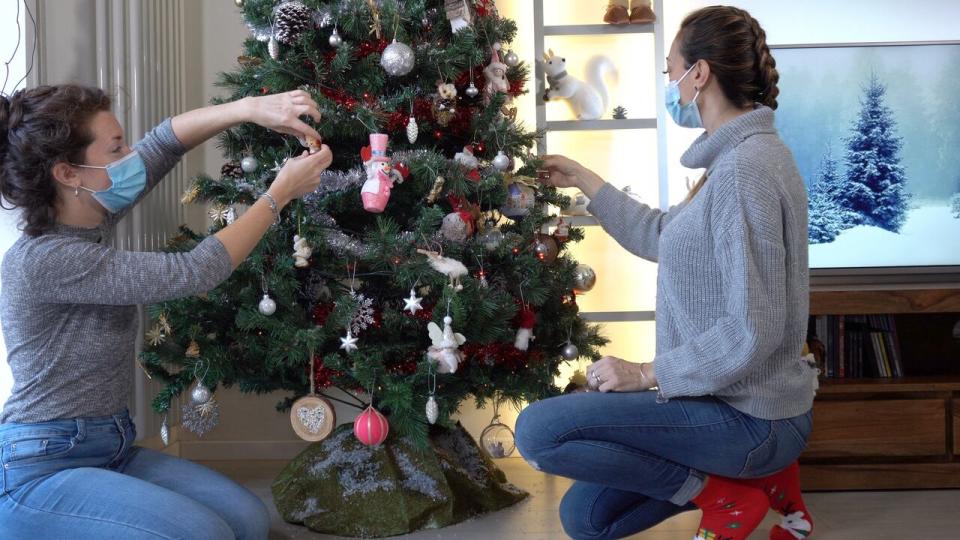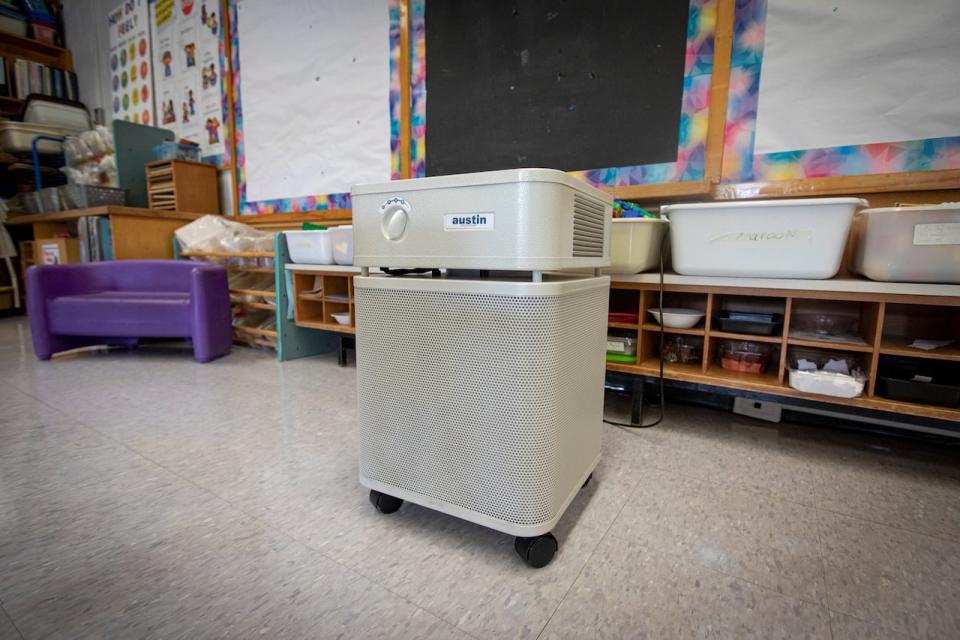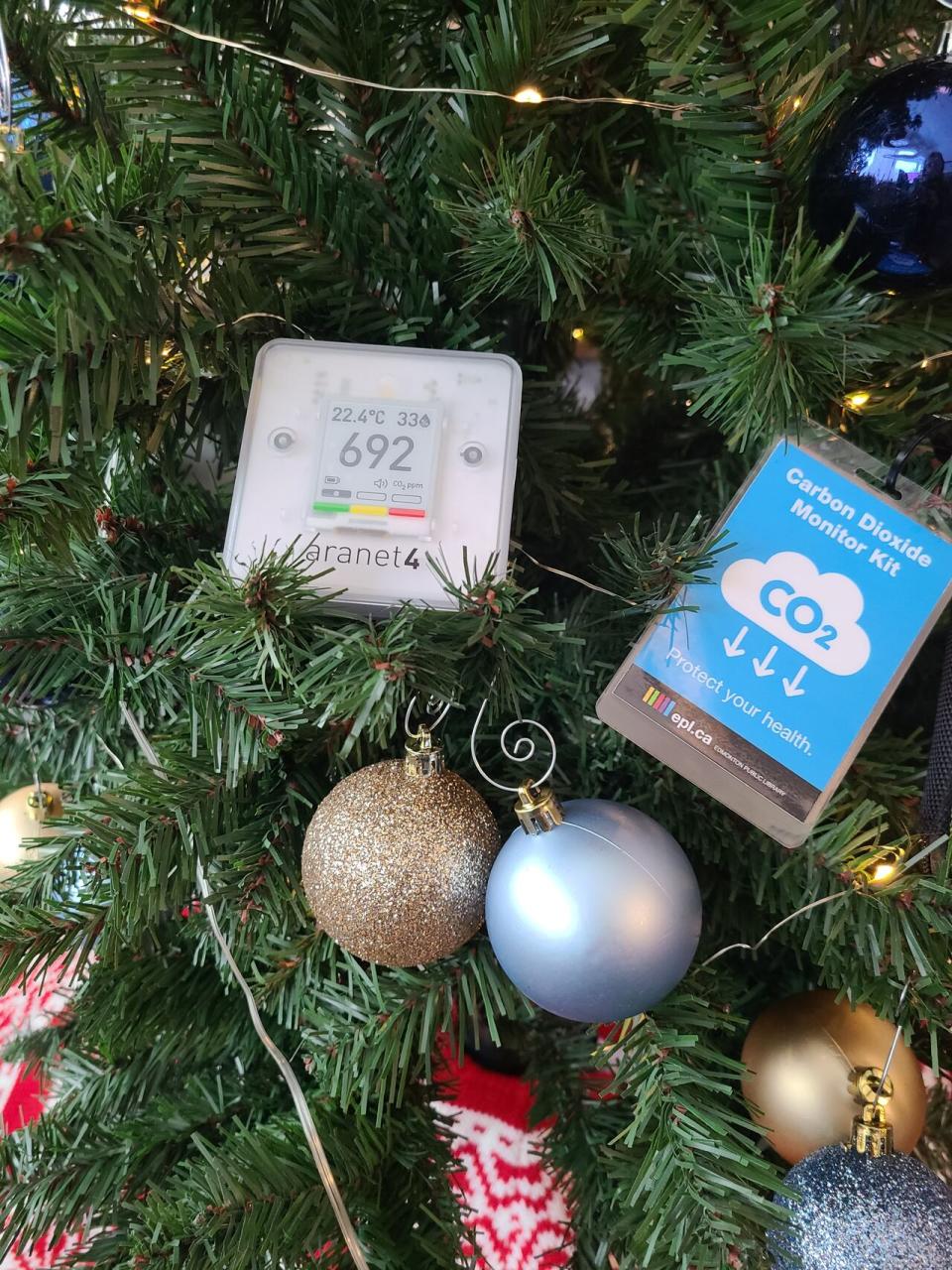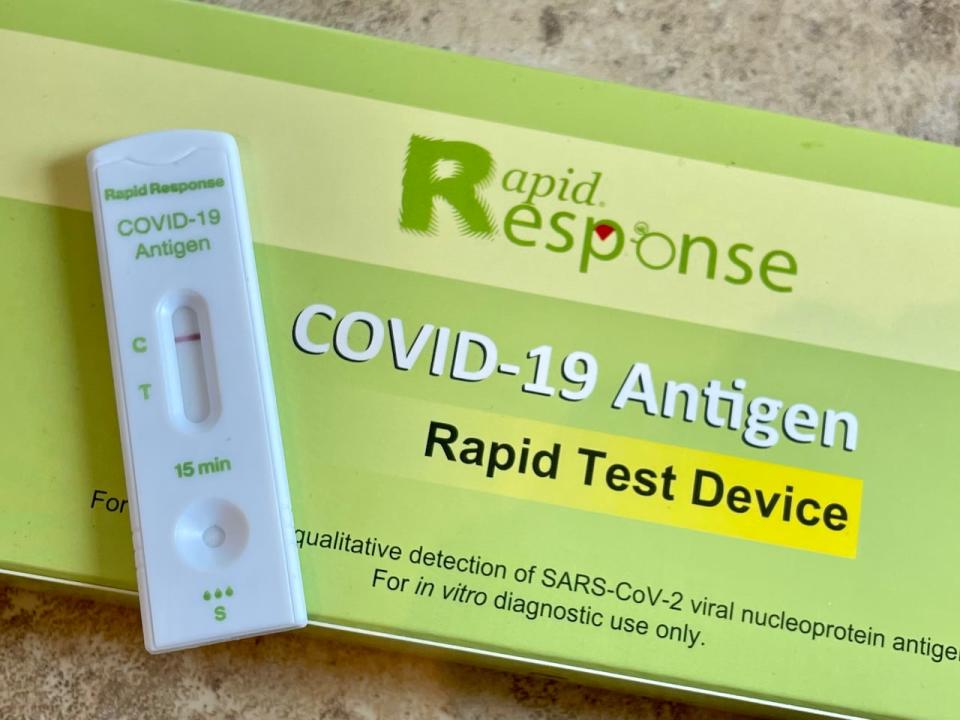'Tis the season to be extra COVID-safe

Whether you're getting on a plane to visit extended family, or getting ready to host a houseful of people, there are steps you can take to help ensure you're spreading cheer this holiday season and not COVID-19 or other respiratory illnesses.
As we enter the fourth holiday season with COVID, fewer people may be taking protective measures, such as masking, in their day-to-day lives.
But holiday gatherings throw in new variables — people from different regions crowding together indoors around a dinner table, the older and more vulnerable shoulder-to-shoulder with the young.
COVID activity in New Brunswick is "moderate" and "increasing" right now, according to Health Canada.
Only Quebec and Ontario are worse, among the nine provinces and territories for which data is available. Both have "high" overall COVID activity, while Quebec is increasing and Ontario showed no change in activity in the latest weekly update.

Public Health recommends people wear a multi-layer well-fitting mask, especially in indoor public spaces, to reduce the chances of getting COVID-19. (Andrea Delbo/Shutterstock)
"Public Health has recommended, and continues to recommend, that New Brunswickers assess their own situations and take whatever precautions they feel necessary to reduce their risks of contracting or spreading respiratory illnesses," said Department of Health spokesperson Sean Hatchard.
He initially cited the standard guidance to reduce the risk of infection and transmission of respiratory illnesses, such as keeping up to date on your vaccines, staying home when sick, wearing a well-fitting mask when in crowded places, covering your mouth and nose when you cough or sneeze, and washing your hands regularly.
Good ventilation can help
When pressed for advice on extra protective measures people can take during holiday gatherings, Hatchard said good ventilation "can help keep you and others protected."
"If it's safe to do so, it is recommended to open windows and doors regularly, ideally with more than one open at a time, even if only for a few minutes," he said in an emailed statement. "This will create a cross-breeze of fresh air and can improve air quality."
Exhaust fans above stovetops and in bathrooms that vent outdoors can help move air outside, said Hatchard.
"However, it's important to note that portable or ceiling fans, or single-unit air conditioners might not improve ventilation."

The Department of Education installed 2,000 portable HEPA systems in classrooms of the schools that lack a ventilation system in January 2022. (Evan Mitsui/CBC)
Air purifiers "can help reduce the amount of some viruses in the air and may add an additional layer of protection," he said.
"Certain air filtration systems, such as high-efficiency particulate air (HEPA) filters, can efficiently trap particles that people exhale when breathing, coughing and sneezing. They have been shown to reduce the concentration of some viruses from the air."
While humidifiers do not remove SARS-CoV-2 virus from the indoor air, Hatchard said they can impact the duration that particles that contain the virus are suspended in the air.
"It is therefore important to maintain an optimal humidity level, between 30 and 50 per cent in indoor settings."

According to Health Canada the long-term exposure limit for CO2 in residential settings is 1,000 parts per million, averaged over a 24-hour period. (Submitted by Marina Afonso)
Carbon dioxide (CO2) monitors can also be a useful indoor air quality tool, he said, because they can provide "a measure of the level of ventilation in a space."
People release CO2 into the air when they exhale, so when indoor CO2 levels are high or increasing, it may indicate there isn't enough ventilation to clear exhaled air from a space.
However, a low level of CO2 in an indoor space doesn't necessarily mean transmission risks are low, Health Canada notes. "CO2 levels alone don't reflect all transmission risks. For example, they will not indicate if someone who has COVID-19 is present."
"It is important to use these tools properly and understand their limitations," said Hatchard.
Airborne transmission acknowledged
Former chief medical officer of health Dr. Jennifer Russell, who resigned earlier this month, recently acknowledged airborne transmission of COVID under questioning by the legislature's standing committee on public accounts.
Liberal health critic Rob McKee had challenged Russell on the fact she never previously publicly acknowledged COVID is airborne and asked her to state her position.
Russell initially didn't answer, but later said, "There are many ways that COVID is transmitted," including large droplets on surfaces as well as small droplets. "And those small droplets, yes, can be airborne."
Asked about her hesitation in answering, Russell told reporters, "It's not cut and dry. … There are different ways that COVID is transmitted and I don't want to say that one is more important than the other."
"It felt a bit black and white and I didn't really want to frame it that way. It needs to be contextualized."
But Green Party health critic Megan Mitton said the lack of discussion about the airborne nature of the virus has been a "theme for a long time" in New Brunswick.
"That's essential to how you respond to it. If you don't acknowledge that it's airborne then you're not going to pay as much attention to things like ventilation," she said.
"I think it's very important that that be acknowledged. It's science. It needs to be clearly stated."
To rapid test, or not to rapid test?
Some experts recommend people take a rapid test right before gathering. Colin Furness, an infection control epidemiologist at the University of Toronto, said he's been "banging the drum on this for quite some time."
Rapid tests are "really good at answering the question, 'Are you contagious right now?'" he said.
"Which is very different than, 'Do you have COVID?' You need to wait if you have symptoms for about Day 5 in order for enough virus to build up in your body for the test to be able to detect that."

Colin Furness, an infection control epidemiologist and assistant professor at the University of Toronto, promotes rapid testing before gatherings. (Katarina Kuruc)
But negative tests of asymptomatic people right before a gathering tells you "no one is spewing virus right now," according to Furness. "And a lot of people spew the most virus in a couple of hours before they start to feel sick."
It's a tool his family recently used, he said, noting it's important to swab the back of the throat as well as the nose to get the most reliable results. "It let us have a safe dinner, confident and safe, as opposed to leaving it to chance."

Rapid test kits are available for free at about 80 sites across New Brunswick, such as libraries, municipalities and regional health authorities' facilities, some of which have dropped their requirement for an appointment. (Alexandre Silberman/CBC News)
The Department of Health disagrees on this use of the free rapid tests, now available for pickup without an appointment at some locations.
"Those who do not have symptoms should not use rapid tests, including not testing before participating in holiday gatherings, as these tests do not perform well in individuals who are asymptomatic," said Hatchard.
Public Health recommends rapid tests only for people with symptoms who belong to one of two groups: they either work in vulnerable settings or are at a higher risk of severe illness and may benefit from treatment, he said.
For rapid test result accuracy, Public Health sill recommends following the manufacturer's instructions of swabbing only the nose.
Asked about the effectiveness of nasal sprays or mouthwashes in reducing the viral load of SARS-CoV-2 in infected people, Hatchard said the department has not received any information from Health Canada on their use or effectiveness in reducing the risk of contracting or spreading respiratory illnesses.


